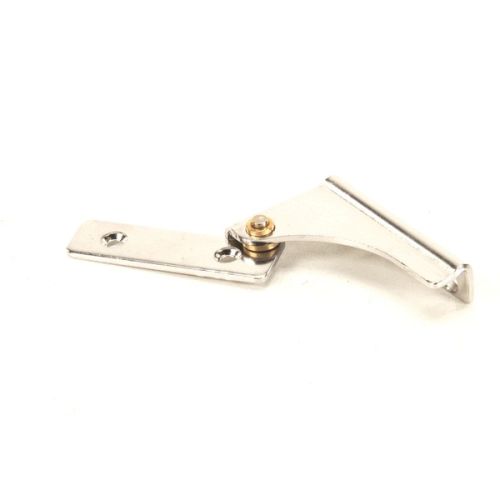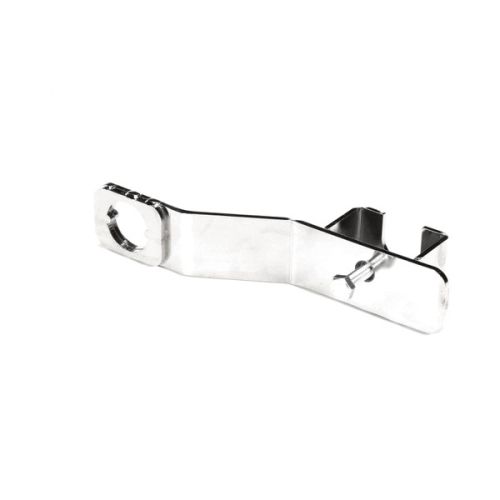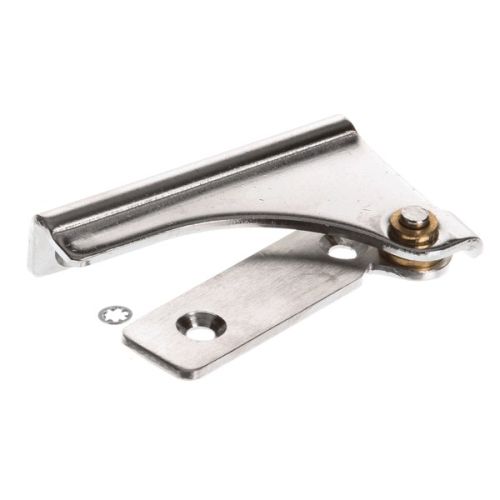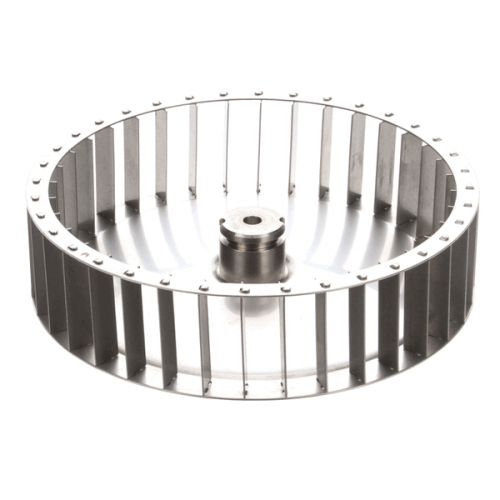How to Replace Moffat Fridge Parts: A Step-by-Step Guide for Commercial Refrigerators
A well-functioning commercial refrigerator is crucial for any foodservice operation, particularly in busy commercial restaurant kitchens where consistent cooling is vital for maintaining food safety. Moffat refrigerators are renowned for their exceptional energy efficiency in demanding environments. However, like any appliance, they need regular maintenance and periodic part replacements to maintain peak performance. Properly replacing Moffat fridge parts can help avoid expensive downtime and prolong the lifespan of your equipment. This step-by-step guide is designed to help you identify common issues, safely remove faulty components, and install new parts with confidence. Whether you’re a professional technician or a kitchen manager, following these instructions will help keep your Moffat commercial refrigerator running smoothly and efficiently, minimizing disruptions in your busy kitchen.
Understanding Moffat Commercial Fridges Parts and Why Timely Replacements Matter
Commercial refrigerators rely on several critical components to maintain reliable cooling and efficiency in busy kitchens. Knowing these Moffat fridge replacement parts promptly helps prevent breakdowns and ensures smooth operation.
Key Moffat Fridge Parts:
-
Compressor: Compresses and circulates refrigerant throughout the system, driving the cooling process within the fridge.
-
Condenser Coils: Release heat absorbed from inside the fridge by dissipating it into the surrounding environment to maintain proper cooling.
-
Evaporator Fan: Circulates chilled air evenly throughout the fridge to maintain consistent temperatures in all areas.
-
Thermostat: Monitors and regulates the internal temperature to keep food stored at safe, optimal levels.
-
Door Seals: Create an airtight barrier to prevent cold air from escaping, helping reduce energy consumption and maintain efficiency.
-
Drain Pan and Tubes: Collect and channel condensation away from the fridge to prevent water buildup and related damage.
Why Timely Replacements Matter:
-
Prevent Breakdowns: Replacing worn parts promptly avoids unexpected failures that can disrupt kitchen operations and cause costly downtime.
-
Maintain Cooling Efficiency: Properly functioning components ensure the fridge maintains consistent temperatures critical for food safety and quality.
-
Save Energy: High-efficiency parts minimize the fridge’s energy use, reducing both electricity costs and its environmental footprint.
-
Extend Equipment Lifespan: Timely repairs reduce strain on other parts, helping to prolong the overall life of the refrigerator.
-
Cut Repair Costs: Early detection and replacement of faulty parts prevent expensive repairs and major system failures.
Looking for replacement parts for your Moffat fridge? PartsFeCA offers a wide selection of high-quality parts like evaporator fans, door seals, and compressor motors. from leading brands like Moffat, Hobart, and Hoshizaki, to keep your kitchen running smoothly!
Safety Precautions and Tools Needed Before Starting Moffat Fridge Parts Replacement
Replacing parts in your Moffat fridge requires careful planning to ensure safety and efficiency. Using proper tools and safety steps ensures a smooth repair.
Safety Precautions
-
Disconnect Power Supply: To avoid electric shock, always disconnect the device or switch off the circuit breaker.
-
Wear Personal Protective Equipment (PPE): Use insulated gloves, protective eyewear, and work boots.
-
Ensure Proper Ventilation: When working with refrigerants or chemicals, ensure that the areas are well-ventilated.
-
Avoid Static Discharge: Touch a grounded metal object before handling sensitive electronics.
-
Keep a Fire Extinguisher Nearby: Have an ABC-rated extinguisher within reach for emergencies.
Essential Tools
-
Multimeter: Tests electrical components for continuity and voltage.
-
Screwdriver Set: Needed for removing and installing screws.
-
Nut Driver Set: For hex nuts commonly found on fridge components.
-
Pliers (Needle Nose and Slip Joint): Useful for gripping and cutting wires or small parts.
-
Flashlight or Headlamp: Illuminates dark or hard-to-see areas.
-
Socket Set: For bolts securing compressors and motors.
-
Tube Cutter: Safely cuts refrigerant tubing.
-
Manifold Gauge Set: Measures refrigerant pressure during diagnostics.
By following these safety precautions and utilizing the appropriate tools, you can ensure a safe and effective replacement of parts in your Moffat commercial refrigerator.
Diagnosing the Problem: How to Identify Faulty Moffat Fridge Parts
Accurate Moffat fridge troubleshooting is essential for effective repairs, as identifying faulty parts early can prevent further damage and ensure optimal performance.
Moffat Fridge Not Cooling Properly
Moffat fridge not cooling properly can lead to food spoilage and is often caused by issues like a faulty thermostat, dirty condenser coils, or compressor problems.
Signs:
-
Food spoils faster than usual.
-
Fridge interior feels warm despite the correct settings.
-
Uneven temperatures across different sections.
How to Identify Faulty Parts:
-
Thermostat: Test with a multimeter to confirm it regulates temperature properly.
-
Condenser Coils: Check for dirt or dust buildup restricting airflow and clean if necessary.
-
Evaporator and Condenser Fans: Inspect fan blades for damage and listen for unusual noises indicating motor issues.
-
Door Seals (Gaskets): Examine seals for cracks or gaps allowing cold air to escape.
-
Compressor: Check if the compressor is overheating or making a loud noise. Test electrical windings with a multimeter.
Excessive Frost Buildup in Freezer
For those experiencing Moffat fridge freezer problems, frost buildup can hinder cooling efficiency.
Signs:
-
Thick ice layers on walls or shelves.
-
Difficulty closing or opening the freezer door due to ice.
-
Some items freeze unevenly or not at all.
How to Identify Faulty Parts:
-
Defrost Timer or Control Board: Manually advance the timer or check the control board for proper defrost cycles.
-
Evaporator Fan Motor: Inspect for obstruction or failure that halts air circulation.
-
Door Seals: Look for damaged or leaking seals that let moisture in.
-
Defrost Heater: Use a multimeter to test for continuity and ensure it heats during defrost.
Leaking Water Inside or Outside the Refrigerator
If you're facing a Moffat fridge leaking water issue, it could be due to common problems like a clogged defrost drain, a damaged door seal, or a cracked water line.
Signs:
-
Puddles are forming around the fridge base.
-
Moisture or water pooling on shelves or drawers.
-
Dripping or water movement sounds inside the unit.
How to Identify Faulty Parts:
-
Defrost Drain: Check for clogs or damage blocking proper drainage.
-
Water Filter Housing and Supply Lines: Inspect for cracks or loose fittings causing leaks.
-
Drain Pan: Confirm correct positioning and check for cracks or overflow.
Refrigerator Cycling On and Off Frequently
If your fridge turns on and off too often, inspect the thermostat, start relay, and fan operation.
Signs:
-
Compressor frequently starts and stops.
-
Temperature fluctuations are causing inconsistent cooling.
-
Noticeable increase in energy usage.
How to Identify Faulty Parts:
-
Thermostat: Test for erratic operation or electrical failure.
-
Start Relay: Inspect for damage or signs of overheating.
-
Condenser Coils and Fans: Clean coils and verify fans are running to prevent overheating.
Check out this guide on troubleshooting common True refrigerator problems to quickly identify, resolve issues, minimize downtime, and prevent costly repairs.
Step-by-Step Process to Replace Key Moffat Fridge Parts
Replacing faulty parts in your Moffat commercial fridge requires proper tools, preparation, and safety. Below are the general steps to replace common components safely and effectively:
Replacing the Thermostat
-
Step 1: Unplug the refrigerator to ensure safety.
-
Step 2: Locate the thermostat behind the control panel inside the fridge.
-
Step 3: Remove the panel screws and disconnect the thermostat wiring.
-
Step 4: Attach the wires to the new thermostat and fasten it securely.
-
Step 5: Reconnect the control panel, plug in the refrigerator, and check the temperature.
Replacing the Evaporator Fan Motor
-
Step 1: Unplug the fridge and empty the freezer compartment.
-
Step 2: Take off the rear panel inside the freezer to reach the fan motor.
-
Step 3: Disconnect the fan wiring and remove the faulty motor.
-
Step 4: Install the new fan motor and reattach the wiring.
-
Step 5: Replace the rear panel and restore power to the unit.
Replacing the Water Inlet Valve
-
Step 1: Disconnect the water supply and unplug the refrigerator.
-
Step 2: Find the water inlet valve at the back, close to the bottom of the fridge.
-
Step 3: Disconnect the water lines and electrical connections from the valve.
-
Step 4: Attach the new valve and reconnect all lines and wiring.
-
Step 5: Reconnect the water supply and inspect for any leaks.
Replacing the Ice Maker Unit
-
Step 1: Disconnect the fridge from the power source and take out the ice bin from the freezer.
-
Step 2: Unscrew and detach the ice maker from the freezer wall.
-
Step 3: Disconnect the wiring harness and water supply line.
-
Step 4: Check the Moffat fridge timer while replacing the thermostat, as it may also impact cooling.
-
Step 5: Mount the new ice maker and reconnect the wiring and water line.
-
Step 6: Plug the fridge back in and verify ice production.
Replacing the Door Gasket (Seal)
-
Step 1: Open the fridge door fully for easy access to the gasket and inspect the Moffat fridge door handle
-
Step 2: Pull the old gasket out of the door frame carefully.
-
Step 3: Clean the gasket groove thoroughly to remove debris.
-
Step 4: Securely press the new gasket into the groove around the door frame.
-
Step 5: Close the door and check that the gasket seals tightly all around.
Testing and Calibrating Your Moffat Fridge After Parts Replacement
Once you have replaced any Moffat fridge parts, it's crucial to perform precise testing and calibration to ensure your commercial refrigerator runs smoothly and maintains consistent cooling performance.
-
Run a Diagnostic Cycle: Activate any built-in diagnostic or self-test mode if available, to check system components automatically.
-
Use a Digital Multimeter: Measure electrical outputs from replaced parts like thermostats or compressors to verify correct voltage and continuity.
-
Calibrate Temperature Sensors: If your fridge has digital controls, recalibrate sensors according to the manufacturer’s instructions to avoid inaccurate readings.
-
Check Defrost Cycle Timing: Ensure that the defrost timer or sensor resets properly after replacement to prevent frost buildup.
-
Monitor Energy Consumption: Compare the fridge's energy consumption before and after the repairs to ensure it's running efficiently.
-
Perform a Stress Test: Load the fridge with typical inventory and observe its ability to maintain stable temperatures over several hours under normal usage.
-
Document Settings and Results: Record calibration settings and test results for future reference and maintenance tracking.
Accurate testing and calibration after replacing parts ensure your Moffat fridge operates reliably and keeps your commercial kitchen running efficiently.
Maintenance Tips to Extend the Lifespan of Moffat Fridge Parts
To ensure your Moffat commercial refrigerator parts remain durable and efficient, regular maintenance is crucial. Here are some tips to help keep your fridge operating at its best:
-
Clean Condenser Coils Regularly: When dust and debris accumulate on coils, the efficiency of heat exchange diminishes. Cleaning coils helps lower compressor strain and energy use.
-
Inspect and Replace Door Gaskets: Damaged or worn gaskets cause cold air leaks and higher energy consumption. Replacing them ensures a tight seal and consistent temperature.
-
Defrost the Freezer Periodically: Periodically defrost the freezer to prevent excess frost buildup, which can obstruct airflow and reduce cooling efficiency.
-
Check and Clean Evaporator Fans: Dust on fan motors restricts airflow inside the fridge. Keeping fans clean maintains proper air circulation and uniform cooling.
-
Monitor Temperature Settings: Incorrect thermostat settings can overwork the compressor and increase energy costs. Adjust settings to recommended levels for optimal cooling.
-
Organize Interior for Airflow: Overcrowded shelves block cold air circulation inside the fridge. Keeping items spaced evenly promotes even temperature distribution.
-
Schedule Professional Inspections: Routine service checks help identify early signs of wear or malfunction, preventing expensive breakdowns and increasing the lifespan of your equipment.
-
Replace Water Filters on Time: Dirty filters restrict water flow and may cause leaks or taste issues. Timely replacement ensures clean water and smooth dispenser operation.
-
Avoid Overloading Shelves: Overloading a Moffat fridge shelf can restrict airflow and stress internal components. Maintain balanced loads to ensure proper cooling and extend part lifespan.
-
Ensure Proper Ventilation: Limited airflow around the fridge causes overheating of the compressor and coils. Keeping adequate clearance improves cooling and prevents premature part failure.
Consistent maintenance prevents breakdowns, lowers repair costs, and extends the lifespan of your Moffat commercial fridge parts.
Check out this guide on essential tips for cleaning commercial refrigerator condenser coils to keep your Moffat fridge running efficiently and extend the lifespan of its parts.
Conclusion
Replacing Moffat fridge parts in commercial refrigerators doesn’t have to be complicated when you follow the right steps. From identifying faulty components to safely installing replacements and calibrating them correctly, proper care ensures your fridge continues to perform reliably in demanding kitchen environments. Costly breakdowns can be avoided, and the lifespan of your equipment can be prolonged through routine maintenance and prompt part replacements. By staying proactive, you're not just fixing issues, you're preserving the performance and efficiency of your Moffat commercial fridge for the long term.
FAQs
Can I replace common Moffat fridge parts like gaskets, thermostats, or fans myself?
Yes, many Moffat fridge parts, such as door gaskets, thermostats, and fan motors, can be replaced without professional help using basic tools. Just make sure to unplug the fridge and follow safety instructions before starting.
How do I know when Moffat fridge door gaskets need replacing?
If you notice cold air escaping, condensation, or cracked rubber, your Moffat fridge gasket likely needs replacement. You can also test it by closing the door on a dollar bill. If it pulls out easily, the seal is weak.
How long do most Moffat fridge parts last before needing replacement?
Most Moffat fridge parts last between 5 to 10 years, depending on usage, maintenance, and kitchen environment. Parts like fans, thermostats, and gaskets may need earlier replacement in high-use commercial settings











